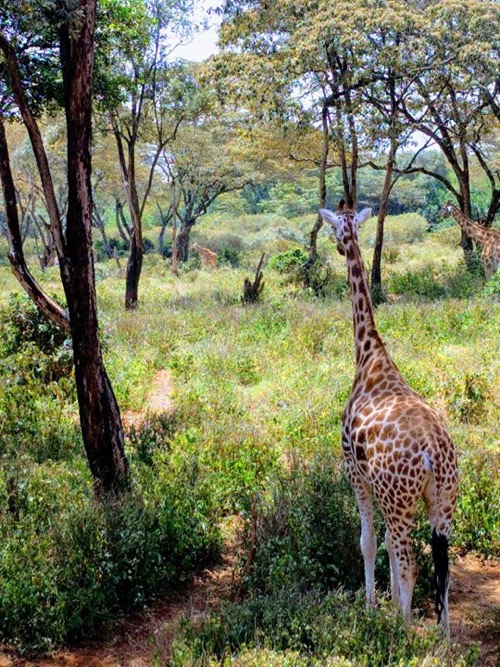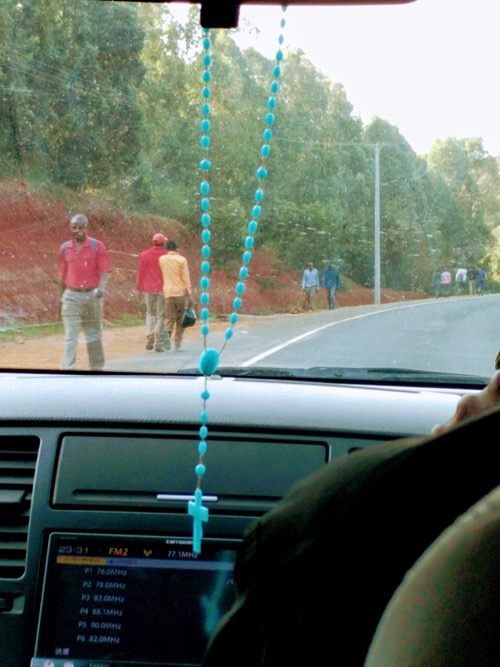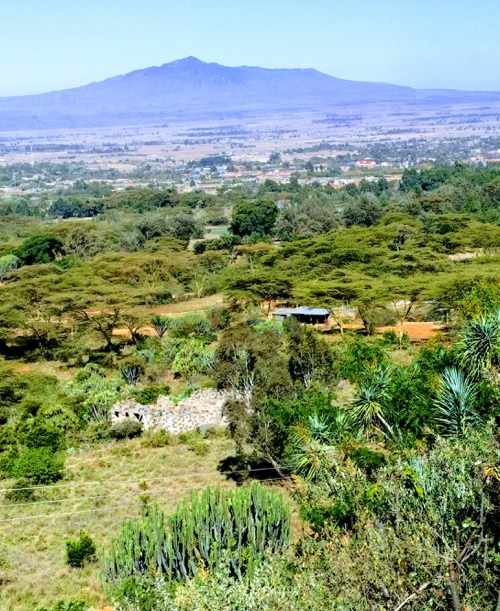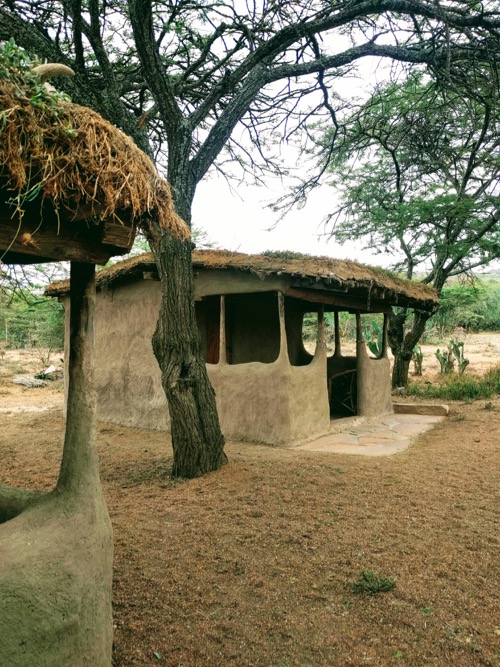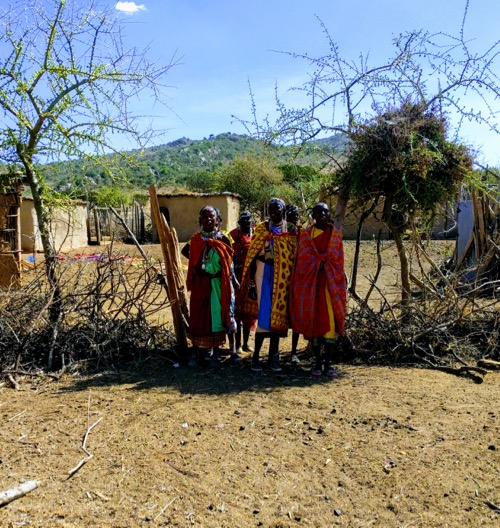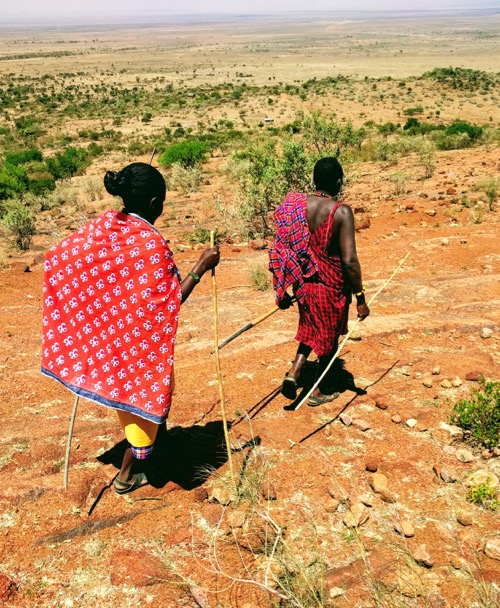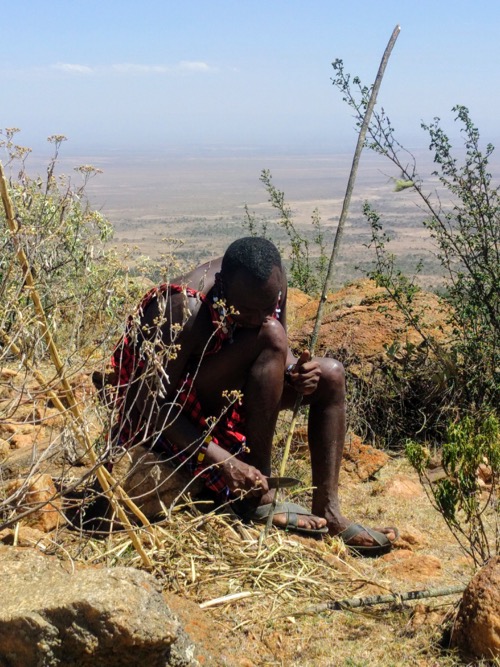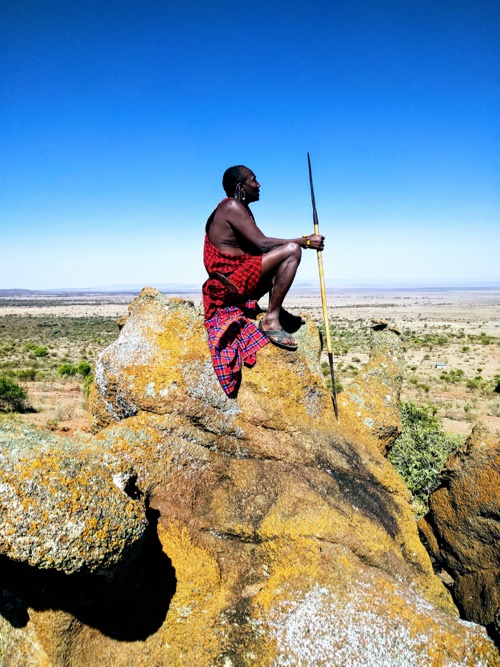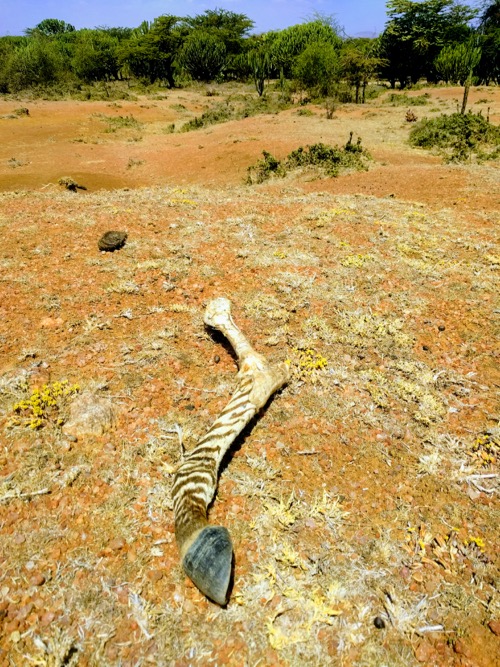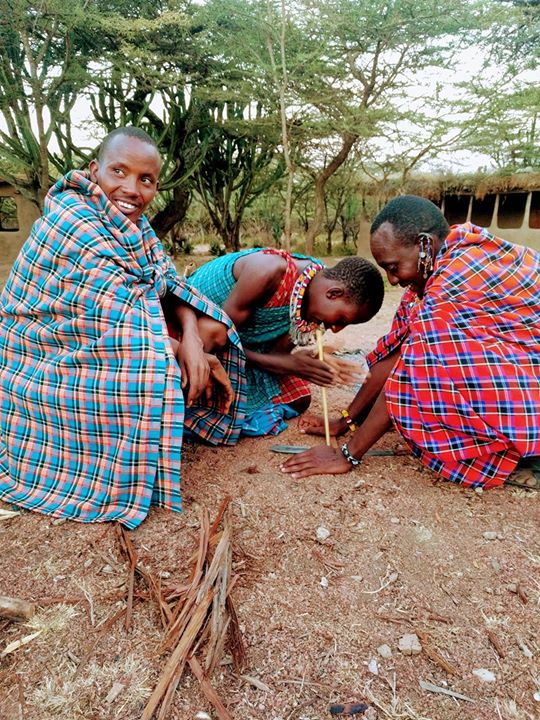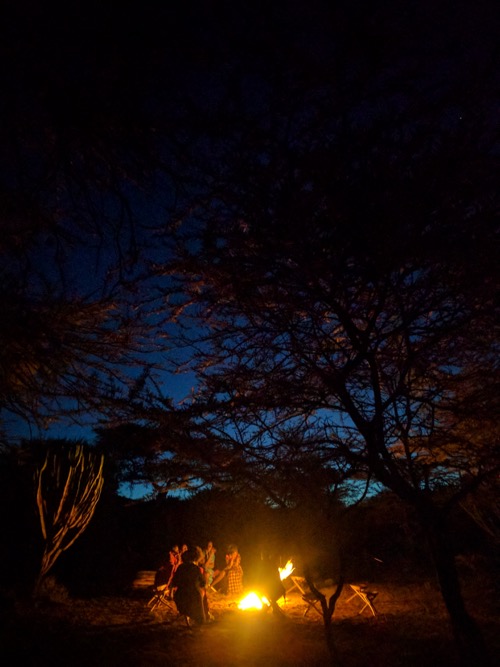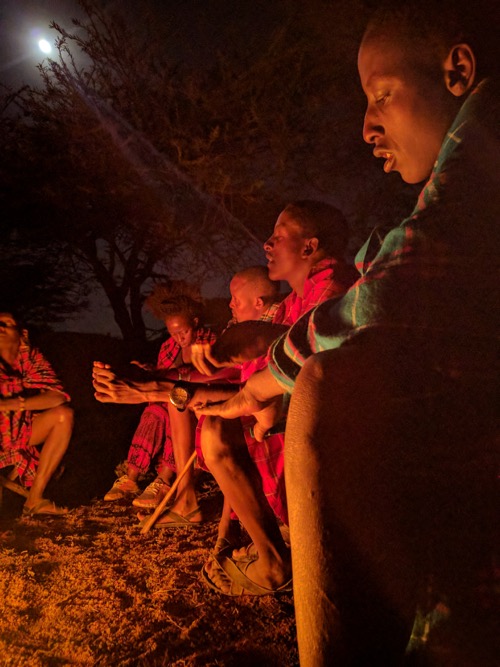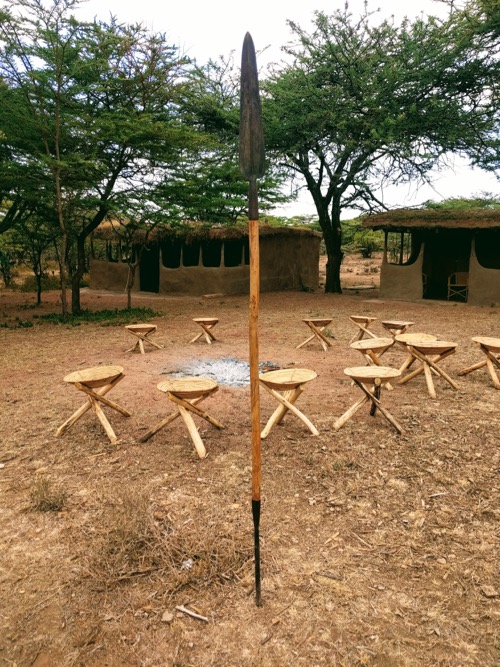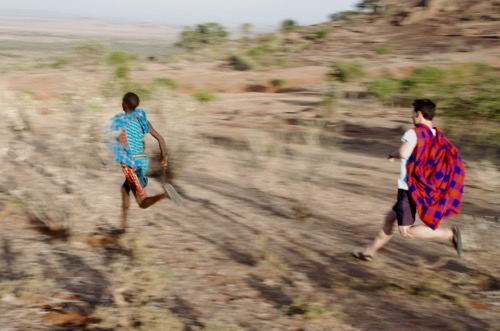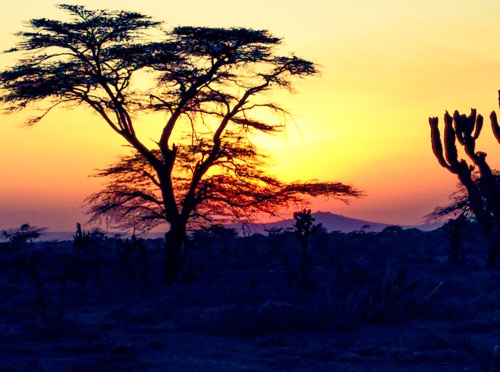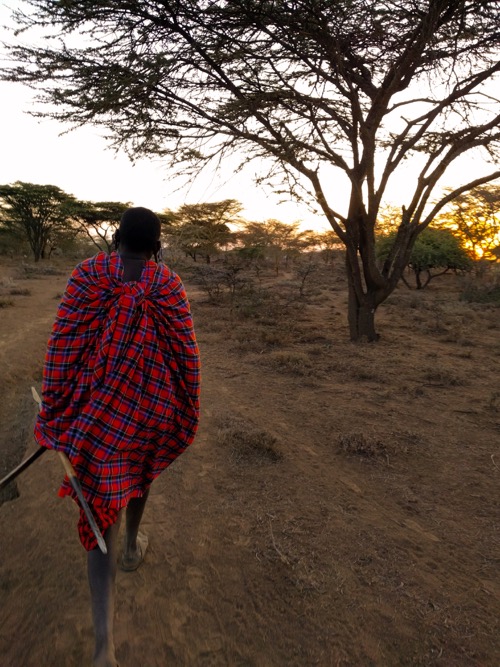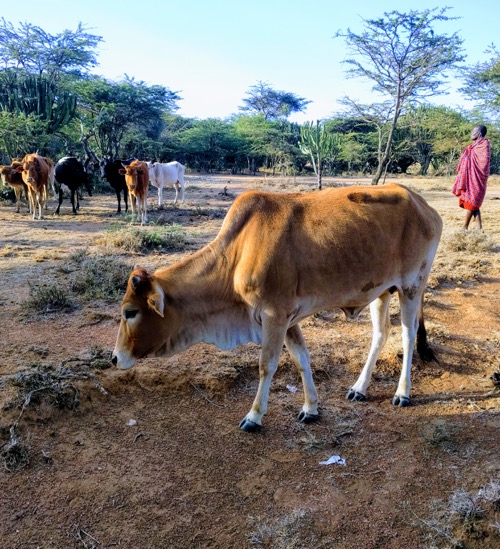What are you going to do if you like tribal living and you’re in the cold winter of the Levant? Head south to the Southern Hemisphere, and to the wilds of Africa.
After leaving Israel and Jordan that is exactly what I did.
I arrived in Nairobi and the first thing which struck me was that much more than in South-East Asia or South Asia or the Middle East people were walking. Yes, there was a traffic problem, but there were also hundreds and thousands of people walking along the side of the road.
I didn’t feel at ease in Nairobi. The level of insecurity and shameless staring at passing white guy wasn’t relaxing. So out of town I went.
The edge escarpment where you look down into the Rift Valley…
After a few hours on the road in a hot bus, passing over drought-stricken landscapes we arrived.
So I’ve finally made it to Africa, I thought to myself a few hours later. I’m sitting in my little mud hut with cow dung walls and stick ceiling, my Masai robe is lying on my bed beside me, and outside is silence with nothing but the odd distant tinkle of a cow bell, a child’s voice, or quiet birdsong. I’m in the middle of East Africa, in a Masai tribe, surrounded by many many kms of empty space and rolling rift valley, much of it semi-arid, some of it thinly wooded. I’m at Maji moto, a community run and supporting small scale cultural camp, just outside the large wildlife reserve Masai Mara in southern central Kenya. A minute ago I was walking down the hill to a natural hot spring, surrounded by large and elegantly limbed Yellow Fever trees, and dotted by local tribeswomen gathering water to be carried on donkeys towards home. Before that I was practicing spear throwing with a Masai man – Quala – aiming our hefty metal shafts at a tree trunk 10 metres away. Qasey’s aim was sure and true – and each time the spear would thud into the trunk and he would smile. Mine aim was not so assured.
Maji moto is a collection of manyatas (compounds of a few mud and cow dung huts nestled amongst the acacia and cactus trees) at the base of the Loita hills. Salaton is the village chief, a tall and serious man with a soft voice. Women in Masaii culture are depedant on men for their livelihood, as women do not inherit land or herd livestock. When a wife loses her husband, the widow becomes destitute. His mother, the village medicine woman, had encouraged Salaton to remedy this situation and to construct a widow’s manyatta, which is a small collection of huts a few hundred metres up the hill from where I sit writing.
You can see the enkung – the circular shaped thicket of thorn trees – that are mounded up around the perimeter to keep wild animals outside in the photo above.
One morning I walked up into the Loita hills with Meeri, Fausti, and Qaula, some of the Masai who live at the camp. Like the others, I wear a bright red and blue shuka, the traditional Masai fabric than hangs from their necks. The two women where wearing their bright fabrics and the metal ear rings and decorations hanging from their necklaces tinkled in the light breeze as we walked up the hill. Apart from the guttural and fast paced Masai banter amongst themselves, the only other sound was sporadic birdsong to alter the immense silence of the Loita plains stretching out below us in the hot morning’s sun. We got to the top of the tallest hill and looked down on the light green and openly spaced vegetation that stretched into the further eastern hills, unlike the dry and barren Loita plain that could be seen behind and below us. We sat on stones and I chatted with Meeri, as Quala made wooden walking staffs for us all, whittling away with his knife in the sun.
Meeri had, from the time we’d arrived at the manyatta, appeared to me a stern and unnecessarily serious young woman. As we walked our conversation – plus I suppose also the time I’d now been with the Masai – seemed to warm her to me. As we sat on top of the hill and talked she began to open up. The previous night I had marvelled at how our manyatta didn’t have a generator (thus no fridge) and had been totally silent at night, how I’d seen the moon and the stars like I was living under an ancient sky seen by my distant ancestors, how being and sleeping in my little mud hut felt safe and restful. I said to Meeri that most Australians are city folk, and that means we as a people are generally deprived of silence, freedom from light-pollution, space to move without bumping into each other, and an easy access to nature. I said that we even have to pay to experience quiet, as for example when we pay to enter a VIP lounge at an airport. I said people such as Meeri were rich in all of these resources. Meeri laughed at the idea of someone paying to experience silence: she could hardly believe it to be true. I asked her what she dreams for in life. She told me a family and some land. Since the Kenyan government has privatised land ownership a few years previously in this region and she was not given any land as she was a woman she felt landless. She just wanted an acre to build a manyatta on. She told me it could be bought for as little as around $1700 US dollars. Meeri told me that she could build a manyatta – find the wood in the hills, chop it, set the walls, make the roof, everything required to have a home – and she could do it all herself. Women build the manyattas in Masai culture, and I didn’t doubt the truth of what she was saying. She only has one cow and can’t see how she will ever have the money to buy even a quarter of an acre of land and admitted that she feels sadness for this.
When I asked about whether her parents would arrange a husband for her, Meeri said no. She said women should be free to marry who they choose. As we sat on the top of the mountain looking down over the forests and the plains, Meeri said to me that all she wishes for are to be given some freedom and some peace in life.
Later, down the hill and back at the manyatta, I learned from another source that in fact Meeri had, a few years previously, been forced to leave her Masai village as she’s refused to follow through in an arranged marriage. She had escaped and journeyed on foot for three days – sleeping in the branches of trees – to Salaton’s community, where she’d heard he helped people like her. I was shocked. It was a surprise to hear that Meeri’s professed love of freedom, as we sat on top of a stoney hill looking over the savannah earlier that morning, has such deep credence and real-life relevance.
Senior elder Quala, husband of several wives and father of many children, looking down on the Loita Plains below us…
Walking with my Masai friends here they spontaneously start singing. The Bedouin people out in the deserts of Arabia will also spontaneously start singing sometimes. It is a beautiful aspect of their cultures. However what I noticed that is different here is that often when signing the Masai will do call and response style singing, or inter-weave their voices so that different people sing different parts of the song.
Indeed when I’d asked Meeri what is the thing you are most proud of about Masai culture, she had said that all Masai were her brothers and sisters and fathers and mothers. In other words she was hinting at the strongly tribal frame of mind of the Masai. This way of seeing the world, where one’s tribe – an extended family of clan not always involving only blood relations – was primary, became more and more apparent to me as I stayed with the Masai. It was very different to my urban and Western background in Australia, full of atomized family units within fenced perimeters, and lone individuals in concrete apartments.
As I walked up into the stoney Loita Hills of Kenya with the Masai and they sang a song, where the different voices came together to create the harmony, where the different parts of the creation were integral to the whole, I knew that this way of singing was another manifestation of how Masai are not really Masai if they are taken away from their tribe. This song was another expression of how primary was tribal thinking and feeling to the identity of these people as men and women.
Looking down on the red earth I see the leg of a zebra, casually strewn by a passing predator. I can hardly believe I’m here – walking with traditional tribal people through the birthplace of the human race. I can hardly believe I’m walking with vividly attired men and women up stoney mountains among alien flora. I’m walking, eating, sleeping, talking and sitting around the fire amongst strongly knit tribal Masai.
A Masai warrior sits guard outside our manyatta each night. I’m actually in Africa to a depth I’d not expected. I’m so glad I’ve come. Up till now my experience of Africa has been middle class professional African expats and nursing students in Perth – now in the Loita hills I walk and talk with men and women who are living much closer to thousands of years of this continent’s history.
One evening they showed me how to make fire with two bits of wood.
The evening lengthened and we were mostly around the campfire.
Its so good to sleep under a star-filled African sky, in silence and in peace, far from the strife of internet signals back in the city.
The next morning…
I am happy to report that I started 2017 by running every afternoon with Meerku, a 22 year old Masai man, up into the stoney Loita hills. I wore my Masai sandals, made out of strips of old tyre. These have very little sole, so running in them gives you a bare-foot style of running. The striding leg’s foot falls at the front of the foot, unlike large-heeled running shoes in the West which encourage runners to strike the ground with their heel and consequently suffer a large force impact on their knees. Meerku lopes away up the hill with slender limbed ease.
I’ll never be such a good long-distance runner as many of the Masai men here naturally are.
At 5.30am 0ne morning we rose and walked through the darkness northwards through the thin acacia woodland. A cool wind whipped our shukas and we walked in silence, still full of sleep. By six god pulled open the curtains, and an orange sun tipped over the plains of Africa.
We walked for some time, to distance ourselves from any manyatas, and human habitations. We were looking for animals, preferably big ones. Binoculars were slung from our necks. After a while we saw a small herd of Thomson’s Gazelle, looking at us warily in the distance. We stepped carefully, avoiding the dagger-like thorns of the Whistling Acacia bushes. Flat-topped accias could be seen silouetted against the rising sun in the east. After some more time walking we crossed a mud-flat and came to a taller woodland. On the edge of the woodland I stood and looked through my binoculars at the razor-sharp image of Purple Grenadier (a small bird with purple and brown plumage) looking back at me from the branches of a nearby Fever Tree. We walked on and gradually came to accept that the dry conditions meant we were probably not going to see any African megafauna this morning. So we headed for home.
Twenty minutes later we neared a enkung – a circle of thorn bushes which deliniates a Masaii manyata or homestead. It was still a couple of hundred metres away from us. A loud noise like a horse’s whinny, but with more of a ‘haaaa’ sound came from out in the bushes in front. All of a sudden a wild zebra came galloping towards us. I raised my binoculars to my eyes, and instantly was up intimately close to a sight unlike anything I’ve ever seen before. The proud high head, and powerful muscular neck and shoulders of the zebra were in full motion and reminded me of a horse, but with a more ancient, powerful frame. The coat of the animal was a maze of vivid white and black zig-zags. I was stunned. The animal burst upon my sensorium like something galloping out of the pages of a fairy tale. It was throwing itself forward across the savannah, but my eyes, thanks to the binoculars, were up so close to its body that I could see its muscles ripple, and detect every striation in its brilliant black and white coat. After what can’t have been more than twenty or forty seconds, it was gone. I lowered the binoculars. Of course words can’t transmit what I experienced seeing that zebra gallop past me, only an experience of being in Kenya and seeing this happen with your own eyes can really explain what I’m talking about.
Most of the time you’re more likely to see these animals – the Masai are pastoralists after all.
One night a fermented drink made from wild honey and aloe vera was passed around the campfire. My Masai friends were in good spirits, as an old friend of theirs was visiting, and soon they began to sing their call-and-response songs.
The crackling in this recording is from the camp fire.
The jovial Quala would often lead with a melody, and the others would underscore his calls with rythmic throat singing, heads being drawn back on the inhalation and chins jutted forward on the exhalation. Sometimes a wild ‘weehoo!’ would puncuate the singing, throw out into the night by some inspired singer. At the conclusion of the music someone spat some of the brew into the fire and it hissed. Quala decided to stand and step away from the fire into the woodland around us. He stood a few metres away from the now standing group of Masai, all clad (including myself) in bright red shukas, and faced the east, with his back to us. Then began a rythmic prayer to Enkei, the Masai god. Quala would praise Enkei with a chant, and we would all echo him with the repeated word ‘Enkei’, in the manner of putting a full stop to his prayers. At this moment, standing under the big moon in the dark of a remote East African woodland, standing amongst traditional warrior-tribespeople, chanting to their god in the direction of the rising sun, I felt closer to the meaning of the word tribal than I’ve ever felt. I felt moved. This was not hippies play-acting – this was real. These were dignified and respected men, chanting together to their god, as their ancestors had for centuries if not thousands of years. At that wild moment of togetherness I felt very close to Africa.
Later in the night Quala and Meeri and Fausti and I decided to go and have a soak in the hot springs before bed. As we walked down the dark path I began to sing the rythmic throat song, like a rythmic animal growl, and Quala echoed over the top with the counter-point answer. As we walked down the hill through the dark, with my head moving back and forward and our voices rythmically melding in high and low counter-point, I again felt like I was getting some real experiential knowledge of what a Tribe is. You can read about tribes in anthropological ethnographies, and you can form your own group of tightly connected friends in the Western world. But to partake in call-and-answer throat singing as you and your Masai friends walk down a dark hill in the wilds of East Africa gives one an experiential intimacy with what it means to be part of a Tribe that cannot be communicated in words or images, and cannot be fully replicated elsewhere.
I had visited the Karen of north-west Thailand, the Buddhist villagers of Sri Lanka, the Bedu of southern Jordan, and the orthodox Jews of Israel. All had fascinated me, especially the mobile and regal Bedu in their goat hair tents, elevated by a landscape of unearthly grandeur. I felt a most familiar sense of what I thought of as a tribe at a friend’s Shabath ritual meal one Friday night in Jerusalem with his family swirled around his legs at the dinner table while he intoned a prayer over our meal. However as I look back on my journey one thing is clear. Africa was to be the place on my journey to the Holy Land where I was to get closest to understanding tribal living. Perhaps the Holy Land is really in East Africa, and not in the Levant after all.
